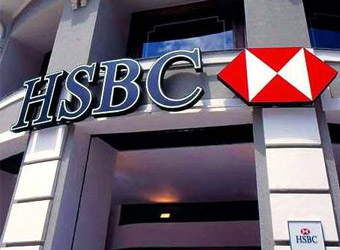In a Recent report, HSBC Global Connections, stated that the Egyptian economy is expected to strengthen gradually in 2014-16, based on improved political stability and inflows of Gulf aid. But a more robust and sustainable pick up is dependent on not only better political stability but tackling desperately weak public finances and the precarious balance of payments situation.
The report also noted that in its recent survey, the trade confidence fell below the neutral mark to 99 reflecting the impact of the political situation.
The report added that the country’s low level of economic development and political uncertainty along with a lack of effective investment in key technology intensive areas will restreain the pace of future growth in high-tech exports.
Over the medium term, a growing share of Egypt’s exports will be destined for markets in Asia, especially China and India. However, the US, Turkey and Saudi Arabia will remain significant bilateral partners
in the short-term, Real export growth is expected to recover in 2014 after marked weakness in the previous two years, reflecting improved political stability and the benefits of inflows of Gulf aid as well as bounce-back from a low base.
In the latest survey of HSBC Trade Confidence index (TCI) it revealed a 12-point plunge in the TCI to 99 which is below the neutral threshold and the equal lowest of all countries considered in the HSBC trade forecast. Although the political situation is slowly improving, it is still adversely affecting investment and economic confidence more generally.
The TCI reveals that Europe is now seen as the most promising region for trade in the next 6 months, as reported by 31% of respondents (up from 22% in the last survey), reflecting the recovery in key European markets such as the UK and Germany. In contrast, only 19% of respondents chose Asia as having the best opportunities for near-term business growth, sharply down from 35% six months earlier.
The share of high-tech goods in total merchandise exports is currently very low at 4%, which reflects the relatively low economic development of the country. Similarly, total goods imports is also low at just under 7%, reflecting the relatively small GDP per capita of the country.
Europe was identified as the most promising region for trade by respondents in the manufacturing sector, while the MENA region is viewed as the most promising region by the construction and wholesale & retail trade sectors.
The US dollar is clearly viewed asthe currency of choice for trade, with 83% of respondents identifying it as their main trade settlement currency.
Looking beyond the country’s near-term difficulties, the report remained optimistic about Egypt’s long-term growth potential. There will potentially be big opportunities for both exporters and importers in coming years, provided the political situation does not deteriorate again.
By region, Asia (excluding Japan) is expected to be the fastest-growing destination for Egyptian exports of goods in the years to 2030. But the MENA region will also show relatively robust growth over this period. India will remain Egypt’s largest export destination in 2030 amongst the countries in the HSBC Trade Forecast, but Turkey will move into second place and Saudi Arabia will be third.
On a bilateral basis, over the period 2021-30 Egypt’s fastest-growing export destinations will all be Asian countries: exports to China, India and Malaysia will each be growing at double-digit rates over this period.
Over the medium term, the most important drivers of export growth at the sector level will be petroleum products, mineral manufacturers and chemicals. Industrial machinery and transport equipment will contribute the most to import growth out to 2030, and will remain the largest import sectors.
By 2030, the share of merchandise exports accounted for by high-tech goods is forecast to be 5%, only slightly higher than in 2013. High-tech exports are expected to grow slightly more rapidly than total exports over the medium term, helped by the high educational standards and top scientists of a small elite but hindered by a lack of investment in key research technology and education.
The import share accounted by technology goods imports will also increase modestly in the years to 2030, reflecting some increase in demand for consumer high-tech goods and ongoing economic development.
However, Egypt currently suffers from persistent under-investment in research and education, an ongoing exodus of domestic talent to other countries and little crossover between R&D institutes and industry, which all reduce the scope for developing high-tech and other research-intensive goods.
Assuming that Egypt can achieve political and social stability, the economy’s medium term growth prospects are favourable. However, this is a big assumption and there are doubts whether the country will invest sufficiently to drive export growth and in particular to enable high-tech exports to grow well in excess of total merchandise exports.



